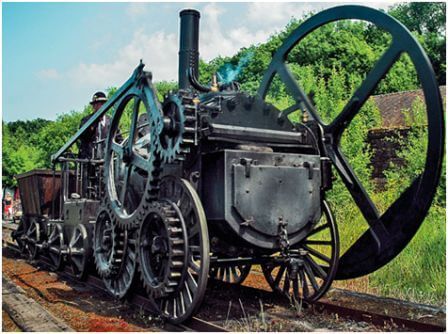Who Invented train
The first train was built by Richard Trevithick in 1804. Richard was a British mining engineer and inventor. The first train was powered by a steam engine with a large flywheel to even the piston rod action. History of TrainsIn ancient times, before we had trains to carry goods and people, wagonways were used. A wagonway was pulled by horses or bulls. Although wagonways were fast and safe, inventors wanted automated locomotives to carry goods. Thomas Savery invented the steam engine in 1698. However, it could not be used for powering trains as it was low-powered. James Watt developed a crankshaft that would convert the steam power to obtain circular motion; this was not until 1763. Watt's invention further led to the invention of steam-powered locomotives. Afterward, Mathew Murray, who was an English inventor, became the first to create a locomotive that was powered by steam. Later, Richard Trevithick showcased the trains series. 
The Evolution of TrainsTrains have evolved in many ways over the years and will continue to do so with technological advancements. 1812-1848: Emerging Steam locomotives The steam-powered locomotive gradually gained popularity in the first half of the 19th century with Richard Trevithick's Penydarren locomotive innovations. George Stephenson, also known as the father of railways, built many experimental locomotives. Eventually, he went on to build the first railway line from Liverpool to Manchester. 1879: Electrifying Railways Werner is the founder of Siemens, an engineering company. Werner von Siemens demonstrated the first electrical passenger train in 1879. Afterward, in 1881, Siemens created the world's first electric tram line. In the next decade, there was a rise in the need to control pollution, which along with alternating current developments helped electric trains flourish. 1892-1945: Dieselization After introducing the diesel engine, research on how diesel will be beneficial in railways was going on. At the beginning of the 20thcentury, it was found that the diesel engine was highly efficient and had greater power to weight ratio. Diesel engines made the steam locomotives rare in the developed countries after 1945. 1945-Present: Diesel-Electric Railways After the diesel engine conquered the steam-powered railway system, innovators started discovering more efficient rail propulsion methods. Through experiments, it was found that of all systems - hydraulic, mechanical, and electric, diesel-electric became standard. Furthermore, diesel-electric developed during the second half of the 20th century. Revolutionary Trains in the World1. Liverpool and Manchester Railway- Steam-powered rail transportation started with this train. It covered the distance of 31-mile between Liverpool and Manchester; it was the first steam-powered train to carry passengers and goods. Designed and developed by George Stephenson, this train had a speed of 30 miles per hour. Liverpool and Manchester railway carried over 500,000 passengers and cotton from Liverpool to Manchester. 2. Baltimore and Ohio Railroad Baltimore and Ohio Railroad became the first American railway to run on a regular schedule in 1827. It carried both goods and passengers. 3. Panama Railway Panama railway track was the first to connect the Atlantic and Pacific Oceans in 1855. Panama railway made travel across the sea easier for the passengers traveling the East and West coasts of the United States. 4. Metropolitan Underground Railway Trains started operating at the depths on January 10, 1863. Thus, the railways now occupied unused underground space and changed the ways railways operate. The world's first subway was a four-mile-long line that carried 30,000 passengers on the first day itself. Advantages of Rail TransportFollowing are the main advantages of railways over the other transportation systems -
Next TopicFormula of Kinetic Energy
|
 For Videos Join Our Youtube Channel: Join Now
For Videos Join Our Youtube Channel: Join Now
Feedback
- Send your Feedback to [email protected]
Help Others, Please Share









